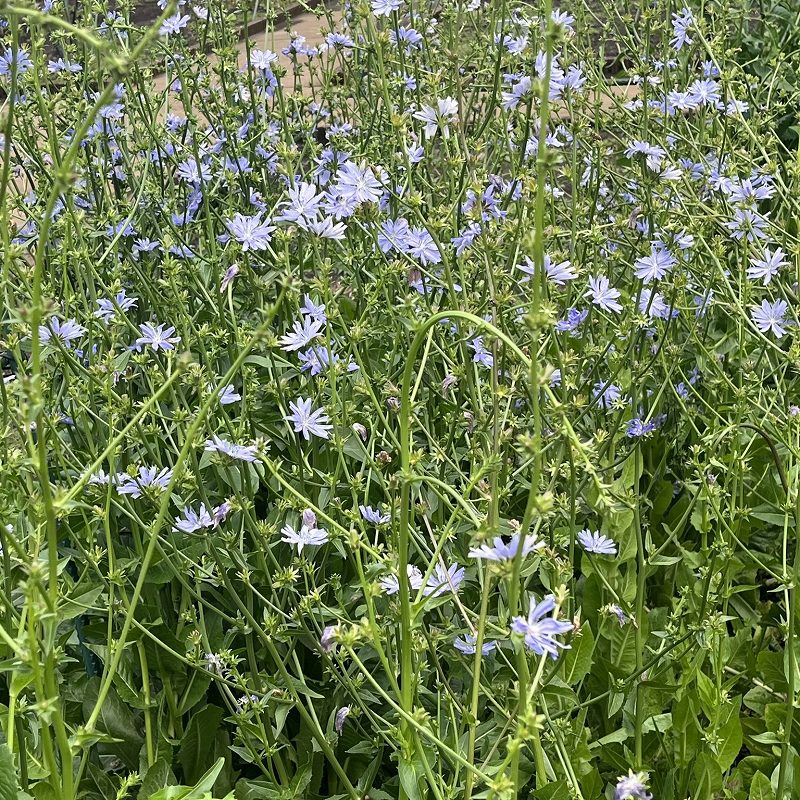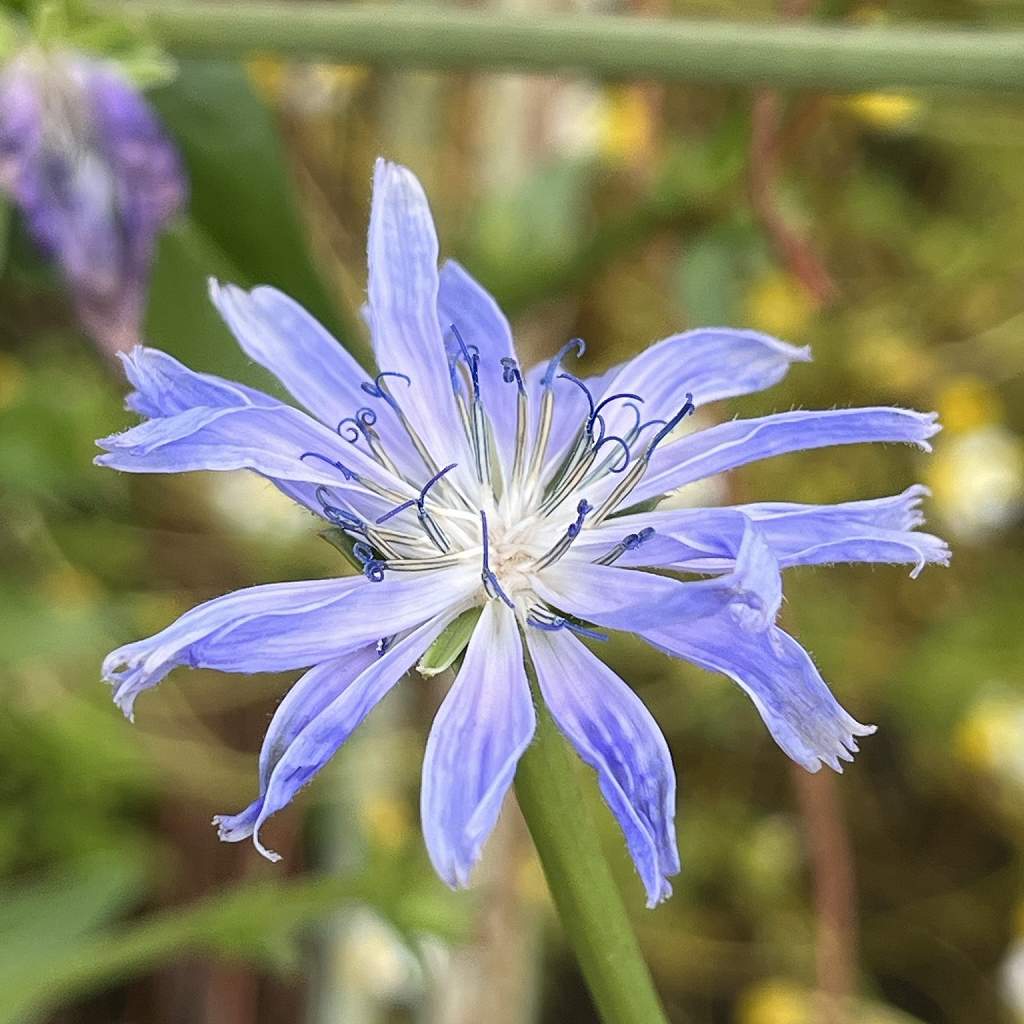チコリはほろ苦い野菜で、花言葉が「待ちぼうけ」。帰ってこない恋人を想って溢れた乙女の涙が花を青色に染めたという逸話に由来します。
Chicory is a bittersweet vegetable, and its flower language is “waiting”. It comes from an anecdote that the tears of a maiden who overflowed thinking of her lover who did not come back dyed the flower blue.
【仮名】チコリ, キクニガナ
【和名】菊苦菜
【英名】Chicory
【学名】Cichorium intybus
【誕生】03/ 11
【開花】06, 07, 08, 09, 10月
【花色】Violet, Blue



チコリ
チコリの概要
チコリはキク科キクニガナ属の多年草です。原産地は地中海沿岸~中央アジア。欧州の道端で自生する一方、ほろ苦い風味の健康野菜として世界中で栽培されています。花言葉は「待ちぼうけ」。帰ってこない恋人を想って溢れた乙女の涙が花を青色に染めたという逸話に由来します。
チコリの名前
チコリは英名で、ラテン語の属名チコリウムに由来し、「畑」という意味。種小名インティブスは古代アラビア語で、花が似ている近縁種「菊萵苣」のことです。別名の「アンディーブ」はフランス語、「ラディッキオ」はイタリア語。和名は「菊苦菜」ですが、あまり使われません。
チコリの姿形
チコリの葉は披針形で、基部が根生し、茎葉が互生します。花は朝咲いて昼に萎れる半日花。花弁が開くと多くの花糸が立ち上がります。花糸は5本の雄しべが合着して雌しべを被覆したもの。雄しべが先に送粉後、雌しべが伸びて柱頭が2裂し、他家受粉します。花後は痩果を形成。
チコリの食用
チコリの葉はそのままでも食べられますが、畑から掘り上げた根株を遮光して芽吹かせる「軟白栽培」により、心地よい歯触りや、ほどよい苦味が楽しめます。根は珈琲に似た苦味があるため、煎ってカフェインを含まない珈琲として利用。花はサラダの飾りつけなどに用いられます。
チコリの薬用
チコリは欧州で昔から「ハーブの王様」と呼ばれる薬草。根が胆石、腎炎、気管支炎などに用いられました。効用は含有するポリフェノールの「チコリ酸」が抗酸化、抗炎症、抗ウイルス、食物繊維の「イヌリン」が整腸、糖の吸収抑制など。肝機能の回復や老廃物の排出も促します。
Chicory
Chicory is a perennial plant of the Asteraceae family. The place of origin is the area from the Mediterranean coast to Central Asia. While it grows wild on the roadsides of Europe, it is cultivated all over the world as a healthy vegetable with a bittersweet flavor. The language of flowers is “waiting”. It comes from an anecdote that the tears of a maiden who overflowed thinking of her lover who did not come back dyed the flower blue.
Chicory is an English name, derived from the Latin genus Cichorium, meaning “field”. The species name Intybus is an ancient Arabic word and refers to the related species “Cichorium endivia” with similar flowers. The alias “Endive” is French and “Radicchio” is Italian. The Japanese name means “chrysanthemum of bitter mustard”, but it is not used very often.
Chicory leaves are lanceolate. The lower leaves are basal and the upper leaves are alternate. The flowers are half-day flowers that bloom in the morning and wilt in the afternoon. Many filaments rise when the petals open. A filament consists of 5 stamens joined together to cover the pistil. After the stamen pollinates first, the pistil extends and the stigma splits into two, allowing cross-pollination. Forms achenes after flowering.
Chicory leaves can be eaten as they are, but you can enjoy a pleasant texture and a moderately bitter taste by “blanching culture” that shades the roots dug up from the field and sprouts. The root has a bitter taste similar to coffee, so it is roasted and used as a caffeine-free coffee. Flowers are used to decorate salads.
Chicory is a medicinal herb that has long been called the “King of Herbs” in Europe. The root was used for gallstones, nephritis, bronchitis, etc. The polyphenol “chicoric acid” contained in it is antioxidant, anti-inflammatory, and anti-virus, and the dietary fiber “Inulin” regulates the intestines and suppresses the absorption of sugar. It also promotes recovery of liver function and excretion of waste products.


